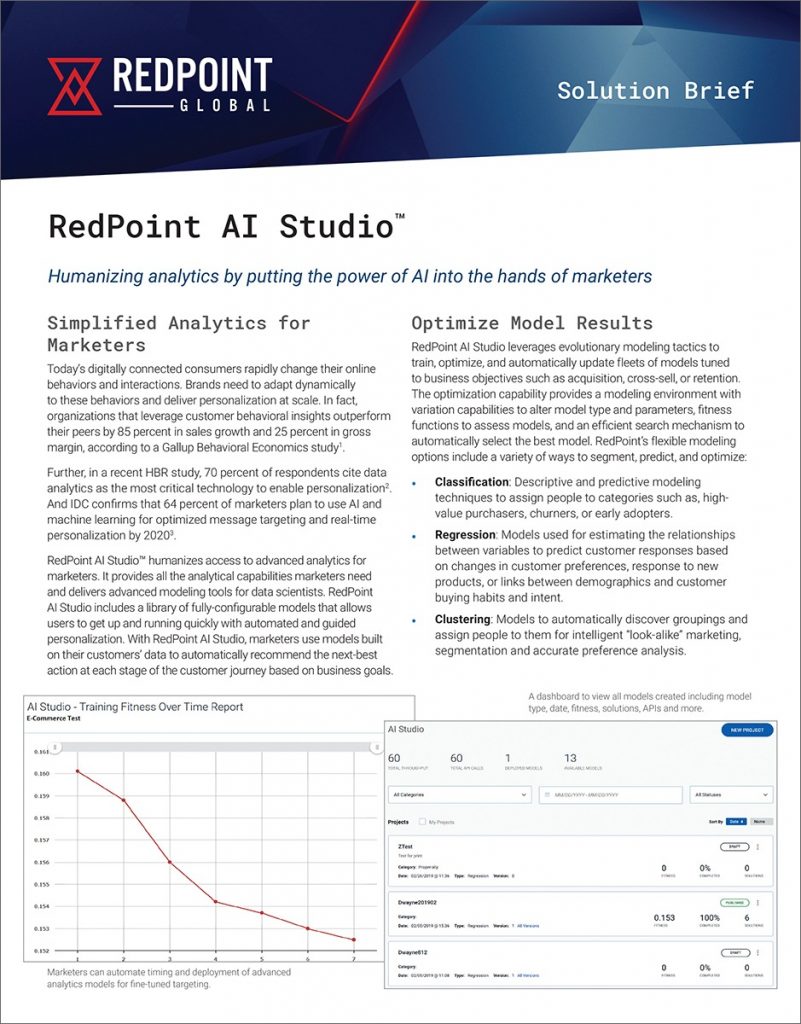 There is general acceptance of a data scientist shortage. There is less of a consensus, however, for what this shortage means for organizations in their digital transformation efforts. The 2018 LinkedIn Workforce Report estimated that more than 151,000 data scientist jobs went unfilled across the United States, with “acute” shortages in New York, San Francisco, and Los Angeles. Similarly, an IBM study estimates that there will be 700,000 openings next year for data scientists, developers, and engineers – roughly more than half of the available positions for those roles today.
There is general acceptance of a data scientist shortage. There is less of a consensus, however, for what this shortage means for organizations in their digital transformation efforts. The 2018 LinkedIn Workforce Report estimated that more than 151,000 data scientist jobs went unfilled across the United States, with “acute” shortages in New York, San Francisco, and Los Angeles. Similarly, an IBM study estimates that there will be 700,000 openings next year for data scientists, developers, and engineers – roughly more than half of the available positions for those roles today.
The trend recalls the early days of telephony; as call volumes exploded in the early 20th century, there was an enormous demand for switchboard operators who manually connected calls until technology caught up with the innovation of the dial tone, direct dialing, and long distance networking. At its peak in the late 1940s, there were more than 350,000 telephone operators working for AT&T. Changing a process – in this case automating the call exchange – curtailed an entire profession.
While we are far from data scientists becoming obsolete, there is similar pressure on technology innovation to alleviate the demand-supply imbalance. Automation with machine learning models lessens the reliance on data scientists to build, train, and deploy analytic models. Self-training models that are built to personalize the customer experience across an omnichannel buying journey put marketers closer to the customer data. Like the direct dial call, automated models eliminate a layer of disassociation that abstracts marketers from the objective of being as close to the customer as possible.
Humanize Analytics for Marketers
Some marketers might harbor the view that the switchboard analogy applies to their own jobs; if machine learning models can replace data scientists, why not the marketer? The simple answer is that a combination of creativity and subjective judgment will enable marketers to elevate their roles – marketing can spend the time designing customer strategies, journeys, and objectives while also managing the intelligent, self-training models that continuously strive to attain the KPIs.
Marketing is empowered to deliver even more value to the business; they can test, tune and optimize models much more rapidly, leading to higher and more profitable revenue growth. This is accomplished by automation of both the model building and model deployment phases. Model building enables direct oversight and monitoring of models without having to query data scientists, leaving the data scientists to do higher-value work such as exploring new data, establishing new connections, and setting up effective guideposts for marketers to operate within. Model deployment is the other key area requiring automation, and marketers can now directly embed machine learning into their dynamic customer journeys, audience selection, and campaigns. This seamless connection to marketing operations is critical, as according to the International Institute for Analytics (IIA), “adoption of analytics at the enterprise level is still very low, with 87 percent of the data science models never making it to production.”
Traditionally, the time and effort it took to access data served as an obstacle to marketing creativity. Eliminating this barrier frees marketers to pursue creative avenues that might otherwise be missed opportunities.
The reason marketing is now able to do this is because evolutionary programming has the power and capability to operationalize fleets of machine learning models, putting upwards of hundreds of models into production, all with the single-minded focus of creating a hyper-personalized customer experience for a segment of one. To borrow the switchboard analogy, it’s as if a group of operators was able to route hundreds of thousands of calls in the blink of an eye; enormous complexity still exists, it’s just hidden from direct view.
Redpoint Automated Machine Learning puts the marketer in control of the switchboard with an intuitive dashboard that presents performance levels and other key metrics such as model type, date, and KPIs. For example, fitness reports detail model degradation which allows the marketer to make adjustments according to current business objectives. The modeling environment humanizes access to advanced analytics for marketers, and accomplishes in real time what it would take data scientists weeks or months to build and deploy.
The Customer at the End of the Data Model
Intelligent, self-training data models do not exist in a vacuum, of course, which is another way of saying that we can’t forget there is a customer at the other end of any business objectives. The fact that the customer is in charge of guiding their own omnichannel buying journey underlines the importance of evolutionary programming; marketers must be ready to pivot in the context and cadence of the customer, which could mean a new model or fleet of models that are in synch with the customer and continuously ready with a next-best action or offer.
A reliance on data scientists introduces the possibility that a model – or models – that require adjustments will not be operational in the time needed, which is to say in line with the customer journey. This time delay also means that these previous models may have been built on old data, lessening their potential to deliver highly relevant messages to individual consumers.
A customer engagement hub (CEH) provides marketers with the single point of control needed to orchestrate a journey in the context and cadence of the customer. A single point of control over data, decisions, and interactions ensures that models are deployed in the operational setting of a customer journey. A CEH takes clean, accurate, and up-to-date customer data from any source, applies in-line analytics with evolutionary programming and includes an orchestration layer that operationalizes the models by recommending and deploying a next-best action for a consumer across any channel or touchpoint.
A CEH is equivalent to the modern telephonic switchboard with the marketer at the controls, abstracting the complexity to leave the marketer in charge of steering a hyper-personalized customer experience. Data scientists, like telephone operators, will always have a role to fill, but technological advancements always lead to process change. In this case, delivering personalized customer experiences that generate revenue necessitates an elevated role for marketers, giving them access and control over the data and analytics that traditionally have been solely within the purview of a data scientist.
RELATED ARTICLES
Harness the Power of Digital Technology as a Revenue-Driving Engine
Humanizing a Customer Experience without Humans: Let Machine Learning Take Control
The Role of Collaboration in a Human Approach to AI

